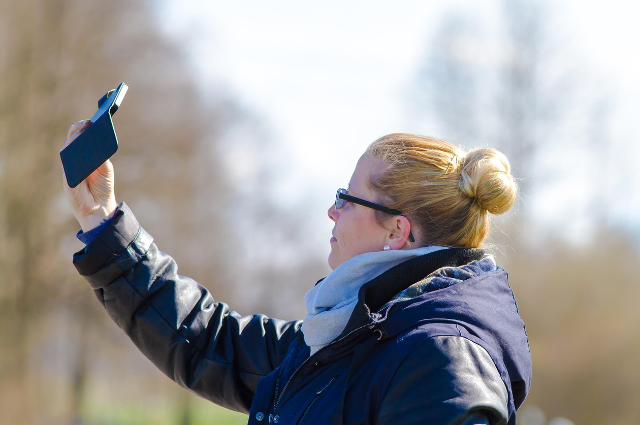
Over the past decades, social media have shifted from being a novelty to a daily necessity for billions of people. Platforms like Instagram, Facebook, X [formerly Twitter], TikTok, and Snapchat have redefined how we communicate, document our lives, and even measure success. But as our digital presence grows, it is impossible to ignore the impact this has had on everyday manners and the way we interact offline. The way we act in public used to be shaped mostly by in-person manners and cultural traditions—but now, a lot of it is influenced by what we see and do online.
From politeness to performance
Traditionally, manners were rooted in mutual respect, personal space, and empathy. A conversation was valued for its content, not its potential for likes or shares. But in the age of social media, many interactions carry an invisible audience. People are increasingly conscious of how many interactions carry an invisible audience. People are increasingly conscious of how moments will look online rather than how they feel in person.
A meal with friends, for example, may pause mid-bite, so everyone can take the perfect photo for Instagram. Sometimes, a wedding guest might spend the whole ceremony looking at it on their phone, live-streaming it instead of just being there and enjoying the moment. It will not seem like a big deal, but small things like these slowly change the way we connect or communicate with each other.
Always being online and wanting to share everything also affects how we behave when we’re out in public. A quiet talk on a park bench might be cut short because someone nearby is filming a TikTok dance. A fun day out with family could turn into taking lots of posed photos, instead of just enjoying time together.
Privacy vs. Publicity
Another shift in etiquette comes from changing ideas about privacy. In earlier generations, taking someone’s photograph without permission was seen as intrusive. Now, it is not common for people to appear in the background of videos or photos that end up online without their knowledge.
For example, a computer on a train might unknowingly become part of a viral clip simply because they were in the wrong place at the wrong time. While some find it harmless, others feel it violates their right to control their own image.
How Social Media Affects Real Conversations
The way we talk to each other face-to-face has changed because of our online habits. When phones ring or vibrate with notifications or messages, they can disrupt the flow of a conversation, making it harder to stay present. For example, imagine you are telling your friends a horror story, and immediately, they watch on their phones to read a message. They are not ignoring you, but can make you feel that they are ignoring you, and their mind is somewhere else. It's like their phone is trying to capture their attention from you. When people split their attention like this, it can hurt relationships. Real listening takes effort and focus. If our minds focus on screens, it's harder to build strong, meaningful connections. These little distractions can start to feel normal, but it becomes hard to have a real, focused conversation.
Public Behaviour and Online Trends
Social media trends also affect how people act in public. Some viral challenges are fun or even help good causes, but others can be risky or inconsiderate. Take prank videos. For example:- A team or group filming a prank in a grocery shop thinks it's all fun or entertainment, but for workers and customers or shoppers around them, it can be distracting and frustrating.
When Likes Matter More Than Manners
Sometimes, the pressure to gain likes, shares, and comments can make people forget about being respectful in public places. It might seem like fun, but it is harmful. It can actually bother the people around them. A lot of actions come from attention online, not from thinking about how they affect others. Public places, which used to have some rules about being polite and considerate, now sometimes feel like stages for showing off or going viral.
Finding the Right Balance
The answer isn't to stop using social media but to be more creative or thoughtful about how we use it -
Will this bother someone nearby?
Is this really meaningful? We can enjoy the digital world without forgetting to respect?
Am I participating in the experience, or just documenting it?
When we take a moment to realize or think about how our actions affect others.
Encouraging a culture of consent
One practical step towards better etiquette is seeking permission before including others in online content. This helps you to build respect for their privacy and trust among you. In cultures where public films are becoming the norm, small acts of courtesy-like asking before tagging or blurring faces can make a big difference. Similarly, being focused on children in public content is essential. Many parents prefer their kids' images to remain offline, yet countless videos include minors in the background without consent. Awareness and emotional well-being in such cases re-affected maturity in digital citizenship.
Reclaiming the Present Moment
Perhaps the most powerful antidote to declining public manners is to consciously “unplug” during certain experiences. Putting your phone away during a meal, a concert, or a chat helps you really enjoy what's happening. Funny enough, the memories you make by being present often stick with you longer than the ones saved on your phone.
Conclusion
The age of social media has brought incredible opportunities for creativity, connection, and global awareness. Yet, it has also changed how we behave or react in public places and how we treat each other face-to-face. Public etiquette, once referred to on the basis of physical presence and shared spaces, now negotiates with the demand of online sharing.
